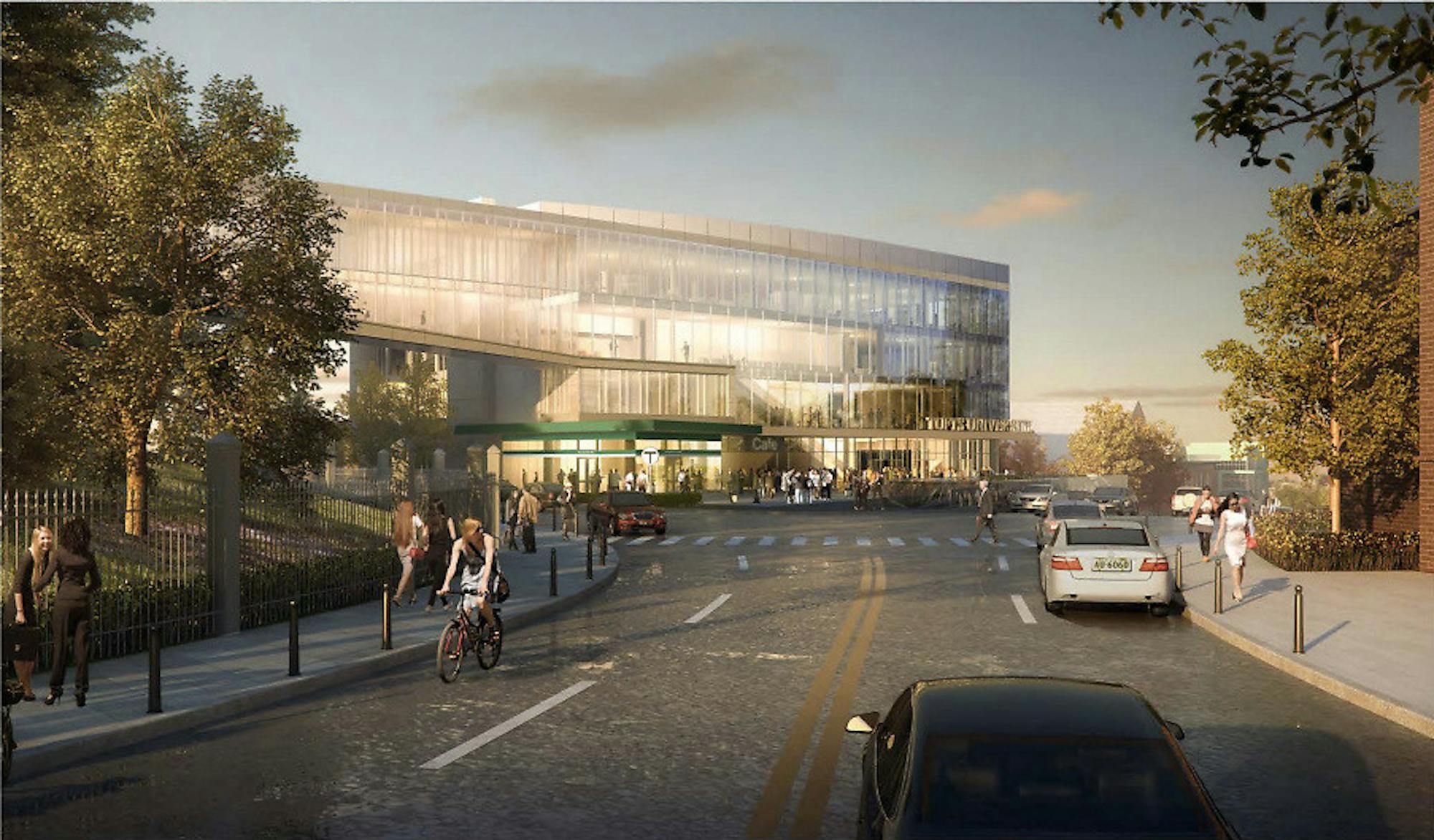The Broadway Bridge at Ball Square will be closed for a year due to the Green Line Extension (GLX) project beginning March 22. The closure is expected to affect the traffic around the university and the surrounding communities. During a public meeting held at Medford City Hall on March 6, some attendees raised concerns around issues of traffic and the extent to which affected residents would be informed.
Terrence McCarthy, the Massachusetts Bay Transportation Authority (MBTA) deputy program manager of stakeholder engagement, began the event with a presentation, followed by a Q&A session. McCarthy discussed the broader goals and projected effects of the GLX on communities as well as the specific changes that the bridge closure will bring.
Rocco DiRico, director of community relations for Tufts, told the Daily in an email that the GLX will have a positive impact on the university. In particular, DiRico said that the GLX will facilitate transportation for the community members and among campuses.
"[The GLX] will make it easier for our faculty, staff, students and visitors to come to campus using mass transit," he said. "It will reduce the number of vehicles on local roads, which will have both traffic and environmental benefits."
DiRico added that the GLX will connect Tufts' campuses in Chinatown and Fenway with the Medford/Somerville campus.
Local residents, however, raised concerns about the closure, specifically safety and detour issues. An attendee at the event, Donald Carriger, said that the closure will make the traffic circle at Powder House Square more dangerous.
“There's gonna be too much cross traffic, so there could be potentially traffic issues inside the circle where everybody’s gonna ram into somebody ... so that's an accident waiting to happen," Carriger said.
Other attendees pointed to the lack of publicity for the residents. Mary Anne Adduci said that the closure had not been sufficiently publicized, especially for residents who did not own computers or use the internet. She said that the lack of communication with the GLX team has been an ongoing issue.
“Our big complaint is the lack of communication with the team. We’ve had [this] experience for the last 10 years; they hold meetings they don’t tell people about," Adduci said.
She added that public announcement door hangers that were distributed throughout the surrounding communities and at the event do not provide enough information for the affected residents.
"I have been saying this forever: to please put a phone number on there for people that don’t have computers or who have a problem that you can’t solve by looking at a website," she said.
McCarthy responded by saying that the GLX team has made various efforts to inform the affected residents.
“For non-digital types who do not have access to computers, the project has made extensive use of automated (reverse 911) calls; news releases to traditional media outlets such as newspapers, radio, and TV; extensive roadway signage including variable message signs and hundreds of traffic signs installed on area roads, public meetings, business outreach, local neighborhood meetings, and the distribution of more than 6,000 door to door leaflets," McCarthy told the Daily in an email.
The City of Somerville will host a similar community meeting on the GLX on March 13 at the East Somerville Community School.
Broadway Bridge to close for a year due to Green Line Extension, local residents raise concerns

Artist's impression of the Boston Avenue and College Avenue intersection, dated June 25, 2015.





